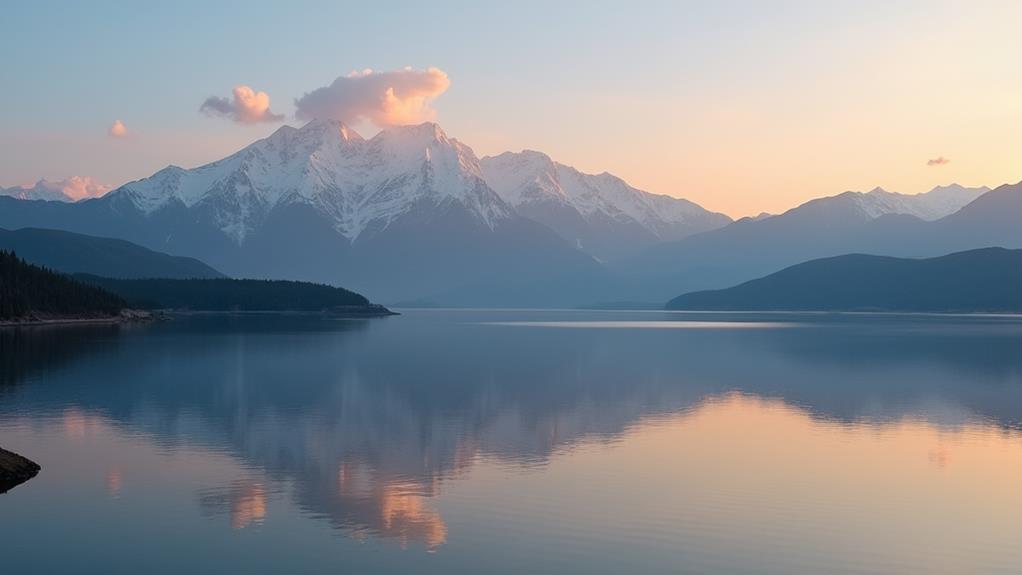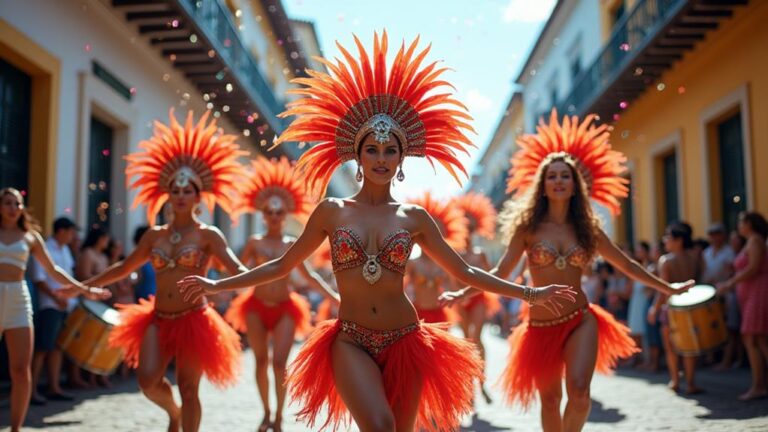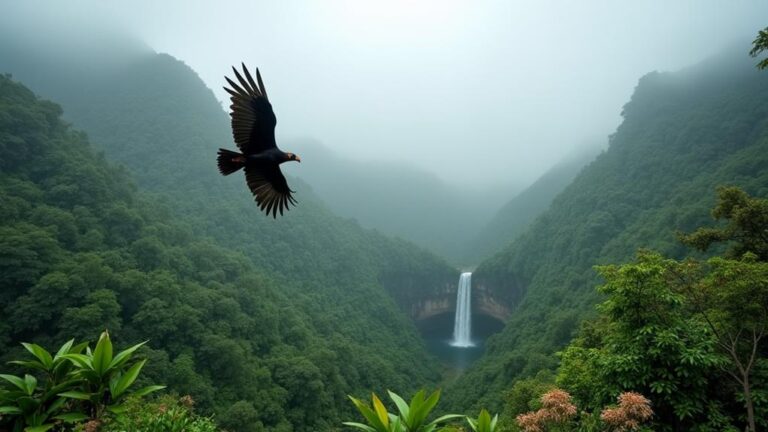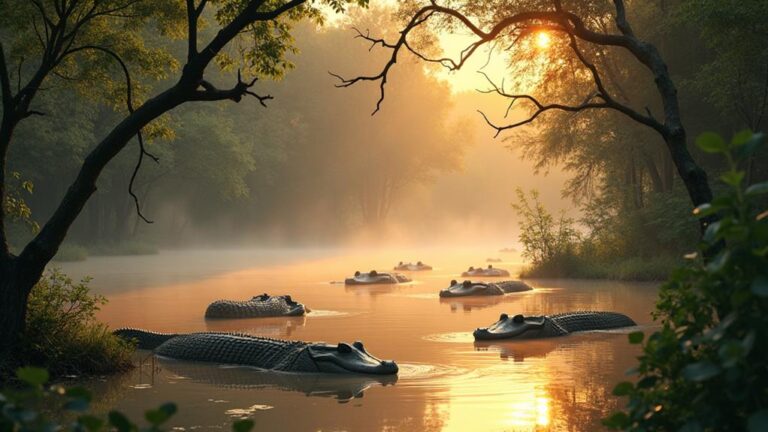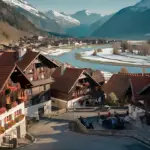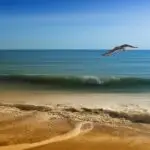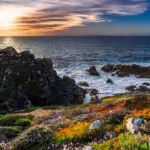As you stand at the threshold of planning your Chilean adventure, the country’s diverse landscapes unfold before you like a rich tapestry, each thread woven with its own unique rhythm and timing. You’re enthusiastic to immerse yourself in the vibrant culture, breathtaking scenery, and outdoor pursuits that Chile has to offer, but you’re unsure when to time your visit. Should you chase the warmth of summer, the tranquility of spring, or the thrill of winter sports? When is the best time to visit Chile? The answer, much like Chile’s geography, is complex and varied – and that’s exactly what makes it so fascinating.
Contents
- 1 Key Takeaways
- 2 Best Time for Outdoor Adventures
- 3 Weather in the Atacama Desert
- 4 Patagonia’s Peak Tourist Season
- 5 Skiing and Snowboarding in Chile
- 6 Spring in the Lake District
- 7 Summer Beaches and Festivals
- 8 Avoiding the Rainy Winter
- 9 Shoulder Season Travel Benefits
- 10 Regional Climate Variations
- 11 Frequently Asked Questions: When Is the Best Time to Visit Chile
- 12 Conclusion
Key Takeaways
- The best time to visit Chile’s Atacama Desert is from September to March for clear skies, ideal stargazing, and outdoor activities.
- Patagonia’s summer months (December to March) offer perfect hiking conditions, mild weather, and wildlife spotting opportunities.
- The Lake District is ideal in spring (September to November) for vibrant colors, crisp air, and outdoor adventures.
- Chile’s coastal towns are perfect for summer relaxation and cultural exploration, with warm weather and festivals from December to March.
- The southern hemisphere’s summer months (December to February) offer ideal conditions for outdoor adventures, hiking, and scenic routes.
Best Time for Outdoor Adventures
As you gear up for outdoor adventures in Chile, timing is everything.
You’ll want to plan your trip during the southern hemisphere’s summer months (December to February) for ideal conditions. This is when the hiking trails in the Lake District and Patagonia are at their best, with mild temperatures and longer days allowing for more exploration.
If you’re an avid mountain biker, this is also the ideal time to hit the trails, with dry and stable terrain making for an exhilarating ride.
During this period, the scenic routes and national parks are less crowded, and the scenery is particularly breathtaking, with wildflowers in bloom and the Andes mountains still capped with snow.
Additionally, many tour operators and outdoor gear rental shops are open, making it easier to plan and prepare for your adventures.
Weather in the Atacama Desert
As you plan your trip to the Atacama Desert, you’ll want to take advantage of the dry season, which typically runs from September to March, offering clear skies and ideal stargazing conditions.
During this time, you’ll experience minimal rainfall, making it perfect for outdoor activities like hiking and sandboarding. However, you must be prepared for the occasional rainy day, which can occur even in the dry season, and know how to make the most of these unusual weather conditions.
Dry Season Benefits
Frequently, travelers to the Atacama Desert find themselves drawn to the dry season, which typically runs from September to March.
During this time, you’ll experience some of the most breathtaking landscapes Chile has to offer. The dry season brings with it dry landscapes that are unlike anything you’ve ever seen before.
Imagine vast expanses of sand dunes, salt lakes, and volcanic rock formations that stretch as far as the eye can see.
But what really makes the dry season stand out is the sunny forecasts that come with it.
With an average of 320 days of sunshine per year, the Atacama Desert is one of the sunniest places on Earth.
This means you’ll have plenty of opportunities to soak up the sun, take stunning photos, and enjoy outdoor activities like hiking, biking, and sandboarding.
The clear skies also make for incredible stargazing, so be sure to spend at least one night gazing up at the stars.
Rainy Days Exceptions
Vibrancy seeps into the Atacama Desert’s landscape on rare rainy days, transforming the arid terrain into a fleeting oasis.
You’ll witness the desert’s hidden beauty as flowers bloom, and the air fills with the sweet scent of wet earth. This unexpected respite from the dry heat is a unique experience you won’t want to miss.
Take advantage of rainy day deals on accommodations and activities, and use the downtime to explore urban escapes like Antofagasta or Calama.
These cities offer a blend of modern amenities and rich cultural heritage, providing an invigorating contrast to the harsh desert environment.
When the rain clears, venture back out to explore the Atacama’s natural wonders, now refreshed and revitalized.
The rain brings new life to the landscape, and you’ll have a front-row seat to this transformation.
With fewer tourists during the rainy season, you’ll have a more intimate and immersive experience in this breathtaking region.
Patagonia’s Peak Tourist Season
During the southern hemisphere’s summer months, from December to March, Patagonia transforms into a hiker’s paradise, and you’ll want to be there to experience it.
The warm weather and long days make it an ideal time to explore the region’s iconic national parks, like Torres del Paine. You’ll have ample opportunity to hike the famous W Trek, a four-day journey that takes you through some of the park’s most breathtaking landscapes.
The hiking trails are generally dry and well-maintained during this period, making it easier to navigate the rugged terrain.
As you hike, you’ll be rewarded with stunning views of towering peaks, glaciers, and rivers. The weather is also mild, with average highs in the mid-60s to low 70s Fahrenheit (18-22°C), making it perfect for outdoor activities.
This peak tourist season is also a great time to spot wildlife, including guanacos, pumas, and condors.
With the longer days, you’ll have more time to explore the park’s hidden gems and take in the breathtaking scenery. Just be prepared for larger crowds and higher prices for accommodations and tour services.
Skiing and Snowboarding in Chile
Hit the slopes in Chile, where the Andes Mountains offer a winter wonderland for skiers and snowboarders.
You’ll find world-class ski resorts with premier facilities, equipment rentals, and lessons for all levels.
Chile’s ski season typically runs from mid-June to mid-October, with the best powder snow conditions usually found in July and August.
1. Portillo: Known for its steep terrain and deep powder, Portillo is a favorite among expert skiers.
It’s also one of the most scenic resorts, with breathtaking views of the surrounding mountains and Lake Inca.
2. Valle Nevado: This modern resort offers a range of trails for all levels, from gentle groomers to challenging black diamond runs.
It’s also a great spot for ski resort reviews, with many visitors praising its excellent customer service and facilities.
3. La Parva: With its laid-back atmosphere and varied terrain, La Parva is a great option for families and beginners.
It’s also a local favorite, with many Chileans visiting on weekends to enjoy the fresh powder snow conditions.
Spring in the Lake District
As you trade in your snow boots for hiking shoes, you’ll find that spring in the Lake District is a sensory delight.
The air is crisp, the sun shines bright, and the landscape transforms into a vibrant tapestry of colors. Lake towns like Puerto Varas and Frutillar come alive, filled with the sweet scent of blooming flowers and the sound of birdsong.
Take a stroll along the lake’s edge, and you’ll be treated to breathtaking views of the surrounding mountains, still capped with a dusting of snow.
The forest trails, once snow-covered, are now perfect for hiking and biking. Forest treks reveal hidden waterfalls, sparkling streams, and an array of wildflowers that will leave you in awe.
As the seasons shift, the Lake District awakens from its winter slumber, offering endless opportunities for outdoor adventure and exploration.
With its mild temperatures and stunning scenery, spring is an ideal time to experience the beauty of Chile’s Lake District.
Summer Beaches and Festivals
As you soak up the sun in Chile’s summer, you’ll find yourself surrounded by warm weather activities that bring the coast to life.
You’ll experience the vibrant festival atmosphere, pulsing with energy and color, in every coastal town you visit.
From surfing and beach volleyball to traditional folk festivals, your summer escape in Chile will be a kaleidoscope of excitement and relaxation.
Warm Weather Activities
During Chile’s summer months, from December to February, the warm weather beckons you to bask on stunning beaches and revel in vibrant festivals.
As you soak up the sun, you’ll discover a plethora of activities to indulge in.
- Take sun-kissed strolls along the picturesque coastal routes, like the scenic Highway 5, which winds its way through quaint fishing villages and secluded coves.
- Visit the renowned wine regions, such as the Maule Valley or Colchagua Valley, and indulge in wine tastings at esteemed vineyards.
- Explore the scenic Lake District, where you can hike through ancient forests, kayak on turquoise lakes, or simply relax in a lakeside town.
As you explore Chile’s warm weather activities, you’ll find that the country’s diverse landscapes and rich cultural heritage come alive during the summer months.
Vibrant Festival Atmosphere
You’ll find yourself swept up in the infectious energy of Chile’s summer festivals, where vibrant music, colorful costumes, and tantalizing aromas of traditional cuisine fill the air. As you immerse yourself in the festive atmosphere, you’ll notice the unique blend of indigenous and Spanish influences in the festival fashion, with brightly colored textiles, flowing skirts, and ornate masks.
Chile’s summer festivals are a true celebration of cultural fusion, where traditional folk music and dance meet modern styles and rhythms. You’ll have the opportunity to experience the vibrant energy of the Festival de la Tirana, the Festival de la Chupilca, and the Festival del Huaso Chileno, among others.
Here’s a snapshot of some of the top summer festivals in Chile:
| Festival | Location | Dates | Description |
|---|---|---|---|
| Festival de la Tirana | La Tirana, Iquique | July 12-16 | Colorful costumes, traditional music, and dancing in the desert |
| Festival de la Chupilca | Santiago | January 15-20 | Folk music, dance, and traditional food in the capital city |
| Festival del Huaso Chileno | Rancagua | February 20-25 | Celebrating Chile’s cowboy culture with horse riding, music, and food |
| Festival de la Vendimia | Curicó | March 10-15 | Wine harvest festival with grape stomping, music, and wine tastings |
With so many vibrant festivals to choose from, you’re sure to find one that suits your style and interests.
Coastal Town Escapes
Escape to Chile’s picturesque coastal towns, where the warm summer sun meets the invigorating Pacific Ocean breeze, and the vibrant festival atmosphere spills onto the beach.
These small towns offer the perfect blend of beach relaxation and cultural excitement. You’ll find yourself unwinding on the sandy shores, taking dips in the ocean, and enjoying fresh seafood.
Some must-visit coastal towns include:
- Viña del Mar: Known for its beautiful beaches, gardens, and historic architecture, Viña del Mar is a popular summer destination.
- Valparaíso: This colorful, hilly town is a UNESCO World Heritage Site, featuring street art, quirky cafes, and stunning ocean views.
- La Serena: With its long stretches of sandy beaches, picturesque plazas, and historic architecture, La Serena is an ideal spot for relaxation and exploration.
In these coastal towns, you’ll experience the authentic Chilean culture, try delicious local cuisine, and enjoy the lively festival atmosphere that fills the air during the summer months.
Avoiding the Rainy Winter
Chile’s winter months, from June to August, bring a gloomy atmosphere to the country, with gray skies and relentless rain showers dominating the landscape.
If you’re planning a trip to Chile, you’ll want to avoid these months if you can. The rain can be intense, making outdoor activities like hiking and sightseeing a challenge.
You’ll need to pack warm and waterproof clothing, and consider winter preparation, like bringing a waterproof backpack and sturdy boots.
On rainy days, you might find yourself stuck indoors, waiting for the storm to pass.
However, this can be a great opportunity to explore Chile’s vibrant cultural scene, visiting museums, galleries, and indoor markets.
You can also take advantage of the country’s excellent wine regions, like the Maule Valley, and indulge in a wine-tasting tour.
Just be sure to plan ahead, booking accommodations and tours in advance, as the winter season can be a busy time for Chile’s tourism industry.
Shoulder Season Travel Benefits
Traveling during the shoulder season, which falls in the spring (September to November) and autumn (March to May), offers a sweet spot between the crowds and the weather.
You’ll experience mild temperatures, with average highs ranging from 64°F to 75°F (18°C to 24°C), making it ideal for outdoor activities like hiking, biking, or exploring the scenic coastal routes.
During this time, you’ll reap several travel perks:
- Lower prices: Enjoy discounted rates on accommodations, flights, and tour packages, making your trip more budget-friendly.
- Fewer tourists: Avoid the crowds and long queues, allowing you to explore attractions at a more relaxed pace.
- Local secrets: With fewer tourists, you’ll have a better chance to discover hidden gems and experience authentic local culture, as the locals are more willing to share their secrets with you.
Additionally, the shoulder season is an excellent time to engage with locals, learn about their customs, and participate in festivals and events that are less crowded.
You’ll get to experience the real Chile, without the chaos and commercialization that comes with peak season tourism.
Regional Climate Variations
As you venture across Chile, you’ll notice that the country’s diverse geography gives rise to distinct regional climate variations.
From the arid Atacama Desert in the north to the lush rainforests of Patagonia in the south, Chile spans multiple climate zones. The Andes mountain range creates a rain shadow effect, resulting in a dry climate in the east and a wet climate in the west.
You’ll experience a Mediterranean climate in central Chile, with mild winters and warm summers.
As you explore the country, you’ll encounter microclimates, which are small areas with unique conditions.
The Lake District, for example, has a temperate climate with high rainfall, while the coastal regions have a milder climate due to the moderating influence of the ocean.
Even within cities, microclimates exist, such as the cooler, foggier climate of Valparaíso compared to the sunnier climate of Santiago.
Understanding these regional climate variations will help you plan your trip and pack accordingly, ensuring you’re prepared for the diverse conditions you’ll encounter in Chile.
Frequently Asked Questions: When Is the Best Time to Visit Chile
Do I Need a Visa to Visit Chile?
You’ll likely need to navigate Chilean bureaucracy to determine visa requirements, but don’t worry, it’s relatively straightforward; as a tourist, you’ll probably get a visa exemption, unless you’re from a specific country, in which case, you’ll need to apply in advance.
Can I Drink Tap Water in Chile?
You’ll be relieved to know that you can drink tap water in Chile, as its water quality is generally good, but if you’re unsure, you can opt for bottled alternatives, which are widely available and affordable.
Are There Any Health Concerns in Chile?
As you step into Chile, a treasure trove of adventure awaits, but first, take heed: you’ll need to navigate vaccination requirements and rely on the country’s decent medical infrastructure to guarantee a healthy journey, free from unwanted surprises.
Can I Use Credit Cards in Chile?
You’ll have no problem using credit cards in Chile, but be aware that you’ll likely face credit card limits and fees. Many businesses accept major cards, but it’s a good idea to have some local currency for smaller purchases.
Is Chile a Safe Country to Visit?
As you step into Chile, a beacon of tranquility in South America, you’ll find it’s a safe haven for solo travel, where respecting cultural norms, like greeting locals with a handshake, will earn you a warm welcome and a trouble-free trip.
Conclusion
As you plan your trip to Chile, remember that timing is everything. With its diverse regions, each with its own unique climate, you’ll want to sync your visit with the best conditions for your adventure. Did you know that Chile is one of the most geographically diverse countries in the world, spanning 38 degrees of latitude? This staggering fact underscores the importance of understanding regional climate variations to make the most of your trip.

